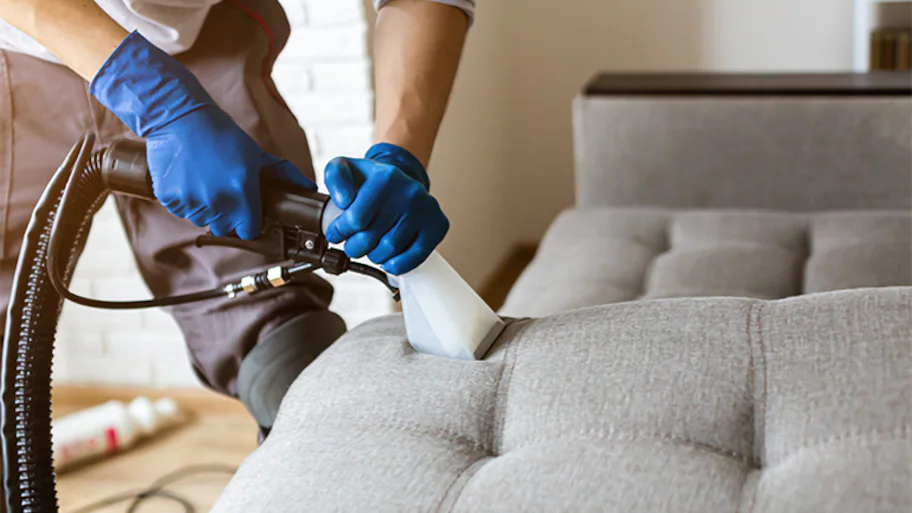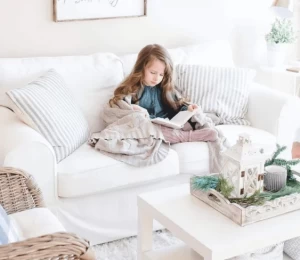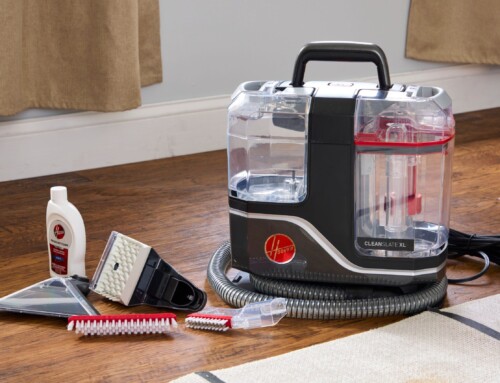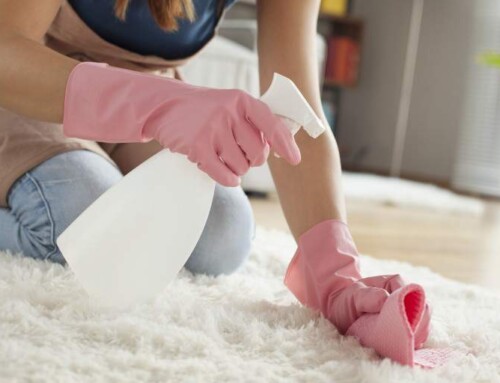Top Tips For Couch Cleaning Mornington Peninsula
Over the past twelve months, your couch has likely endured extensive usage due to increased time spent at home. With soft furnishings receiving high use, it’s no surprise that your couch, in particular, has become one of your household’s most well-used pieces of furniture right after your bed. From indulgent Netflix binges and lazy Sunday brunches to kids’ homework sessions and pet accidents, it’s time to revitalize and provide your couch with the long-overdue care it deserves.
In this regard, I’d like to share my top tips for couch cleaning, fabric sofa cleaning, and lounge cleaning, covering all aspects of soft furniture care and maintenance. Regular cleaning and maintenance can help extend the lifespan and preserve the comfort of your cherished furniture.
If you’re interested, we would be more than happy to discuss these tips and any other specific requirements you may have for the cleaning process. Feel free to reach out, and I look forward to assisting you in rejuvenating your soft furnishings.
Upholstery Steam Cleaning Secrets: The Ultimate Couch Cleaning Approach
We employ hot water extraction for our upholstery cleaning services (steam cleaning) to clean your furniture effectively. Throughout the years, we have found this method to be the most efficient for deep cleaning and eliminating dirt and stains from fabrics.
We begin steam couch cleaning with a non-toxic pre-spray treatment, followed by gentle brush agitation and dwell time to loosen accumulated dirt. Stains, if present, are also pre-treated with suitable stain removers.
Subsequently, we proceed to the rinse and extraction stage. Our steam cleaning equipment carefully releases hot water and steam at the appropriate pressure for your couch. This ensures that the sofa is not over-saturated, avoiding prolonged drying times and the risk of mould growth.
One of our top tips for couch cleaning involves the mighty hot water extraction. The extraction process co-occurs, removing hot water, cleaning solutions, dirt, germs, and bacteria. Our equipment is designed to achieve maximum moisture extraction, leaving your couch damp rather than soaked.
A top tip we recommend is having your upholstery professionally cleaned at least once or twice a year. Regularly vacuuming dry soils (at least once a week) can help maintain your couch between cleanings, preventing premature wear and tear caused by accumulated dirt and dust in the fibres.
Essential Couch Cleaning: Check Your Fabric Type First!
Upholstery manufacturers usually provide clear indications on the label regarding the appropriate cleaning method, either recommending professional steam cleaning or specifying “dry clean only.” It is imperative to adhere to the instructions on the label to avoid any potential risks of permanent damage to your upholstery and to ensure compliance with the warranty terms. Prioritizing proper care and maintenance will help preserve the quality and longevity of your upholstery investment.
The Ultimate Test: Can Couch Cleaning Erase Stubborn Stains?
When it comes to couch cleaning, the most common stains we encounter are food and drink stains, often accompanied by watermarks from spot-cleaning attempts. The good news is that a professional couch cleaner can easily remove most of these stains, primarily through steam cleaning.
While water-based food and drink stains respond well to acid-based treatments, some tougher stains, like red wine, coffee, tea, and tomato, may require specialized stain treatments. For instance, paint, nail polish, grease, oil, text colour, or pen marks may necessitate a dry solvent-based treatment.
We cannot emphasize the importance of seeking professional advice before attempting any stain removal. DIY stain removal can lead to unintended consequences, such as watermarks or permanent damage to the fabric. Always spot-test fabric in an inconspicuous area before attempting stain removal.
We strongly recommend consulting with a professional upholstery/couch cleaner to ensure optimal results for any tricky stain removal needs. Our team can provide guidance and assistance over the phone or via email, addressing your questions on couch cleaning, cleaning services, and stain removal.
For in-depth guidance on handling pet stains, we invite you to explore our comprehensive guide: “Pet Stains On Carpet & Upholstery.”
Your couch deserves the best care, and our expert team is here to ensure it remains spotless and pristine. Let us help you achieve a stain-free and refreshed sofa for years.
Expert Advice: How to Maintain Your Furniture for Longevity
When it comes to maintaining your upholstery, prompt attention to spills is essential. Beyond contacting our professional services, we recommend immediately addressing food or drink spills. Here’s a top tip to handle such situations effectively:
- Act swiftly: When a spill occurs, prevent it from setting into the fabric. Blot the affected area first, absorbing as much of the spill as possible.
- Treat remaining stains: If there’s a lingering coloured stain after blotting, create a solution by mixing one part white vinegar with three parts water. Lightly mist the stained area and gently dry it using a blotting action with a clean, dry cloth—avoid rubbing, as it may worsen the stain.
- Seek professional advice: If the stain persists despite your efforts, don’t hesitate to contact us for expert advice and assistance.
Please note that this is only suitable for fabrics not labelled as “dry clean only.” Before application, always test the solution on an inconspicuous couch area to ensure compatibility.
By following these proactive tips, you can help preserve the longevity and beauty of your upholstery, ensuring it stays in top-notch condition for years to come. If you have any questions or require further help, feel free to contact our team of experts.
Remember, proactive care can make a significant difference in the lifespan of your furniture, keeping it looking fresh and inviting for your home or business.
Couch Drying Time: What to Expect and How Long It Will Take
In upholstery cleaning, drying times are crucial in maintaining the fabric’s integrity and preventing potential issues like mould growth. Typically, we recommend a 3-5 hour drying window for couches, though it may vary depending on the fabric type and ventilation conditions.
Natural fibres like wool and cotton tend to require more time to dry than synthetic or blended fabrics. Ensuring proper airflow through cross ventilation after couch cleaning is essential to expedite the drying process.
In warmer weather, leaving windows open on a pleasant day and directing a fan towards the couch can aid in faster drying. Consider heating while keeping the windows slightly open in cooler months to encourage airflow.
One essential tip to remember: Never shut up the house totally after couch cleaning. Insufficient ventilation can significantly prolong drying time, increasing the risk of mould development. Always prioritize good ventilation to safeguard your upholstery investment.
By following these efficient drying practices, you can ensure your couch remains fresh and clean while prolonging its lifespan and maintaining a healthy indoor environment.
Demystifying Fabric Protection: What You Need to Know
Fabric protection, often known as Scotchguard, is a popular fabric treatment used to safeguard various fabric types, such as wool, cotton, nylon, and microfiber. It is essential to note that this treatment is water-based, making it unsuitable for finished leather or fabrics labelled as “dry clean only.”
During the fabric protection process, a light mist of the product is sprayed over cleaned upholstery, creating an invisible repellent coating on the fibres. This coating encourages liquids to remain on the surface rather than immediately penetrating the couch. The benefit is allowing you time to address spills by mopping them up before they seep into the fabric.
While fabric protection cannot prevent the natural accumulation of dirt over time, it significantly reduces the likelihood of permanent staining caused by liquids. Regular upholstery cleaning remains necessary, and reapplication of the fabric protection is advised. It is essential to consider that fabric protection is priced per seat and is an additional cost.
Top tips for couch cleaning pro tip: remember to avoid using inexpensive, inferior brands of fabric protection found in supermarkets. These products can lack the same level of protection as those used by professional carpet cleaners. In the long run, you may require multiple applications to achieve the same level of safeguarding that a single professional treatment provides. Choosing the proper fabric protection can make a significant difference in maintaining the quality and appearance of your upholstery.
How Much Does It Cost to Clean a Couch? Upholstery Cleaning Prices Revealed
Our Upholstery Cleaning Mornington Peninsula services have a number of different pricing options to choose from. Our pricing for upholstery cleaning is based on a per-seat charge. We define seats by the number of individuals the couch can comfortably accommodate rather than the number of cushions. Our rates commence at $65 per seat, and we include a nominal additional fee for heavy-duty stain removal. There is an extra $30* per seat for added fabric protection.
A helpful tip to remember while determining the number of seats is that a chaise is typically counted as 1.5 to 2, depending on size. For instance, a 3-seat couch with a chaise will be considered a 4.5 to 5-seat couch for pricing purposes.
Should you have any questions or require further clarification, please do not hesitate to reach out. We are here to assist you with your upholstery cleaning needs. Thank you for considering our upholstery cleaning Mornington Peninsula services.









Leave A Comment